A major museum is about to open in Madrid, the largest in Spain and one of the largest in Europe, a structure of more than forty thousand square meters, eight thousand of which are open to the public, with hundreds of works, a view of the city, even ruins of ancient Madrid incorporated into the building. Opening on June 28, 2023, the Galería de las Colecciones Reales (Gallery of the Royal Collections), described as Spain’s “most important museum project in decades,” will open near the Royal Palace, in a building carved out of the rock, from the Campo del Moro to the Plaza de la Armería, near the Almudena Cathedral. It will have two entrances: from the side of the plaza toward the Mirador de la Cornisa, at the level of the Royal Palace, and from the Cuesta de la Vega, at the highest level of the Campo del Moro gardens.
Starting this summer, the Gallery will be the main vehicle for projecting the cultural activities of Patrimonio Nacional, the entity that manages Spain’s state museums. The stated goal of the new museum is to showcase the richness, excellence, and diversity of the royal collections and, at the same time, serve as a showcase for all the royal sites, such as the Royal Palace, the Escorial, the Palacio del Pardo, and others. It will also allow Patrimonio Nacional’s work in the field of restoration, conservation, and enhancement of the impressive historical, cultural, and natural heritage it manages in six autonomous communities of Spain to become even more widespread.
The initial idea of building a museum to house the collections of the Crown’s heritage originated during the period of the “Second Republic” (1931 to 1939), as stated in the Decree establishing the Museum of Arms and Tapestries, but for a long time there was no more talk about it: the initiative was then revived in 1998, when the Government’s Delegated Commission for Cultural Affairs approved the construction of the Gallery. Twenty-five years of work have thus been needed to complete the ambitious project, and the installation of the museographic elements that will allow the 650 pieces of the inaugural exhibition to be displayed is now well underway.
Presiding over the opening on June 28 will be the king and queen, Philip VI and Letizia Ortiz. After the inauguration (which, moreover, will coincide with the start of the Spanish presidency of the European Union), as Minister of the Presidency, Relations with the Courts and Democratic Memory Félix Bolaños made known, citizens will be able to enjoy several open-door days to “get to know this great jewel.”
“It has been a long journey in which many teams and many administrations have participated. I want to thank the effort of all the people who have worked over these years so that this Gallery can finally open its doors,” said Ana de la Cueva, president of Patrimonio Nacional. The opening will allow, she added, to “show the world this wonderful project.”
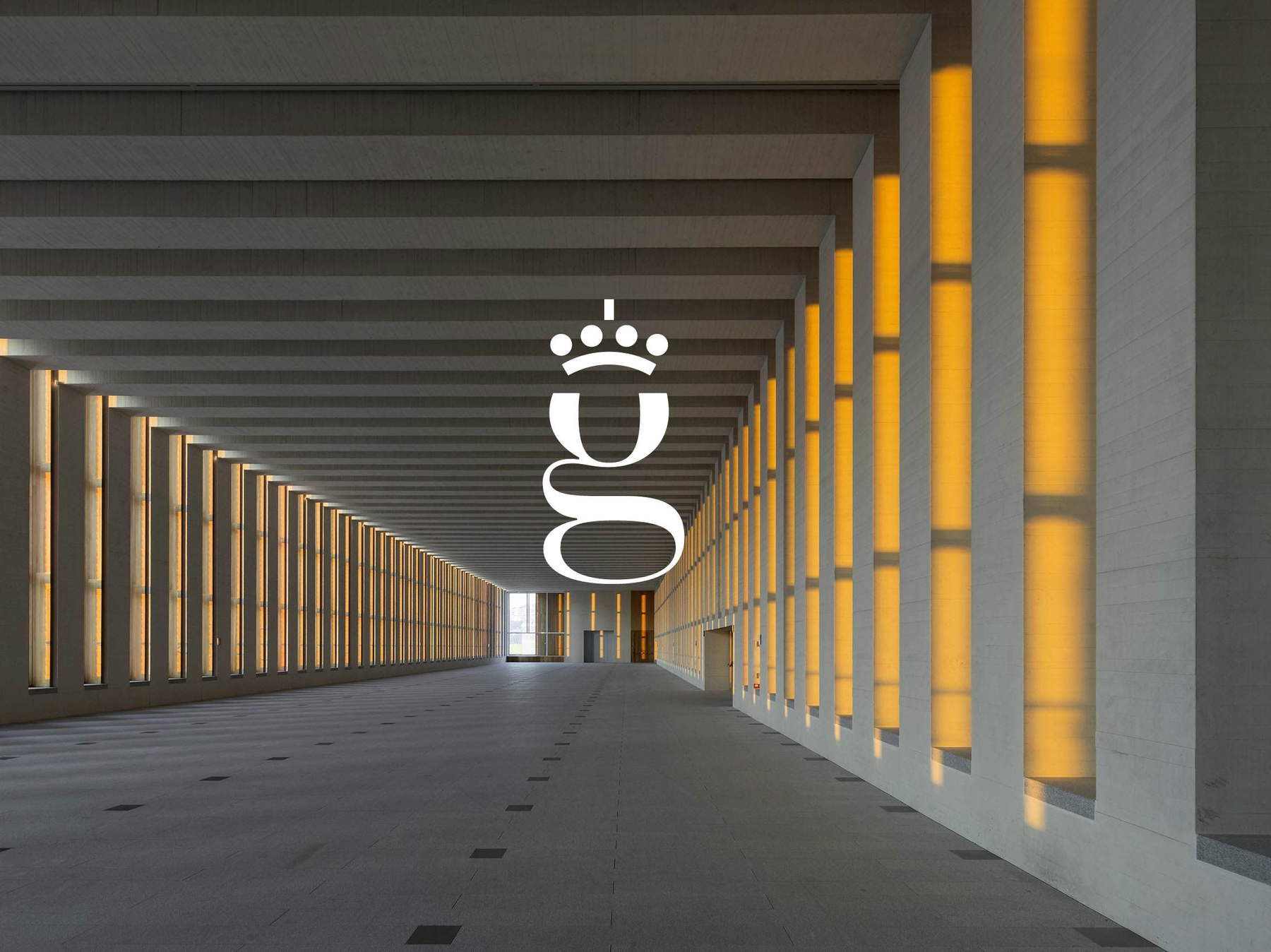 The
The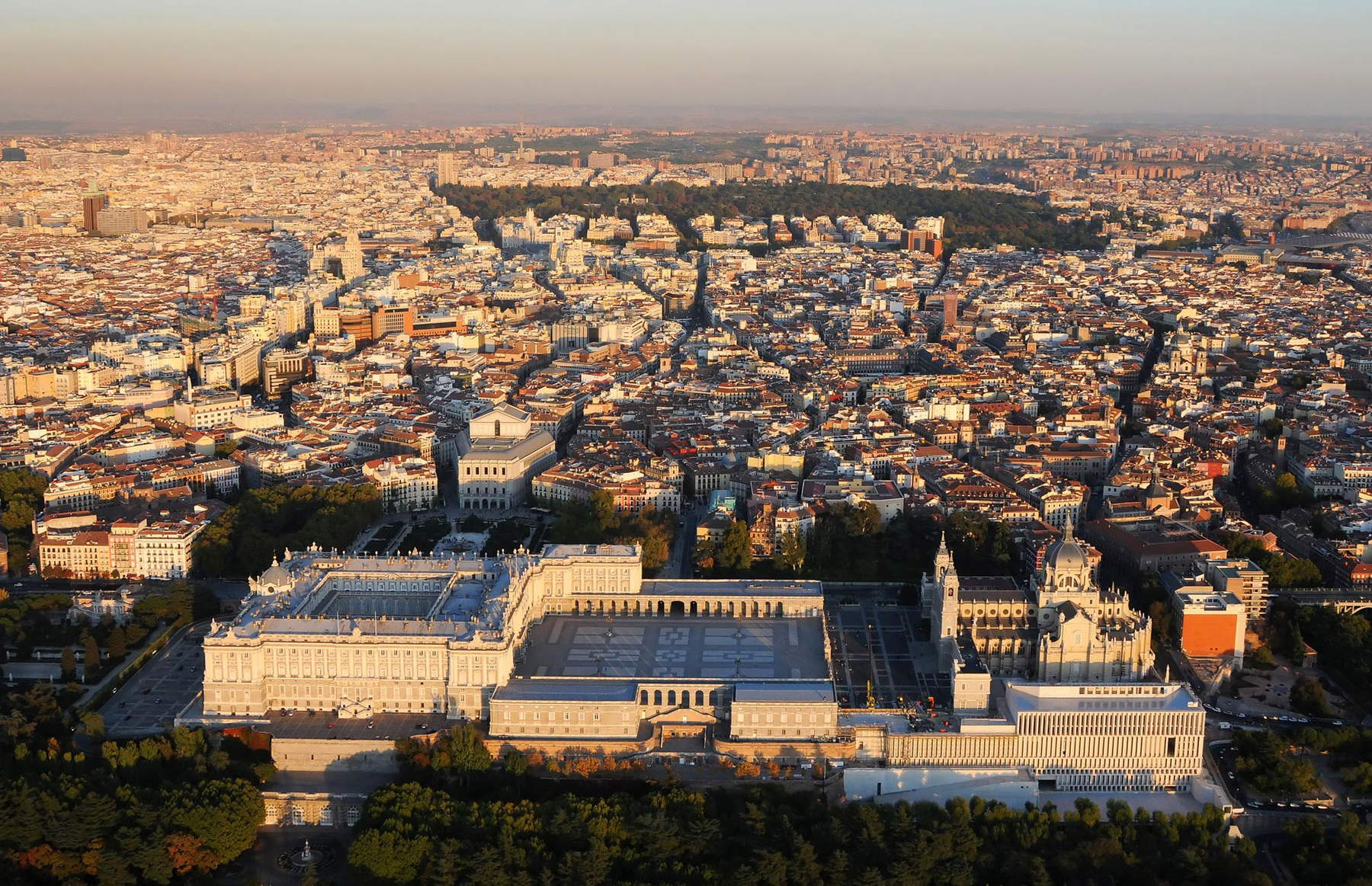
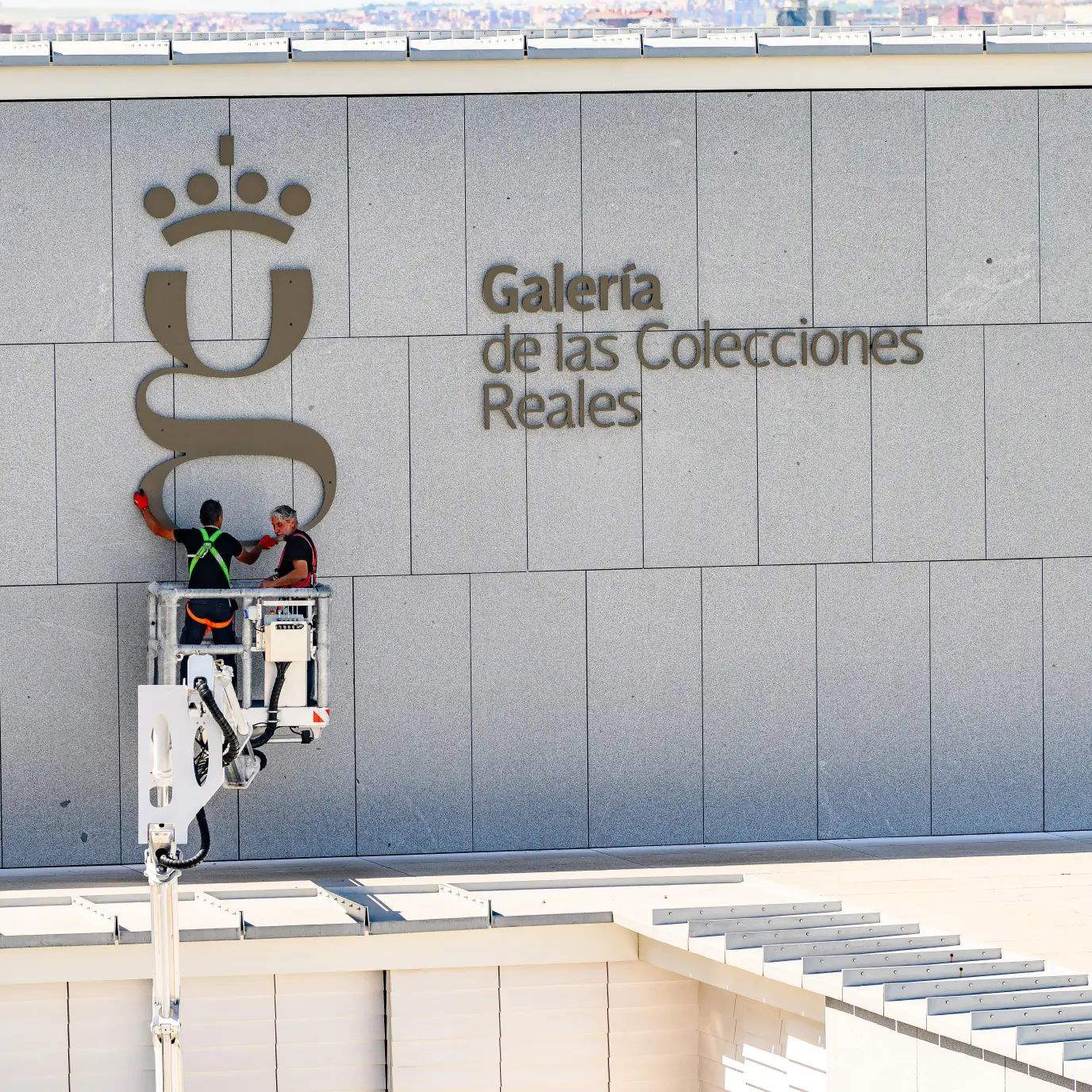 The installation of the logo on the
The installation of the logo on the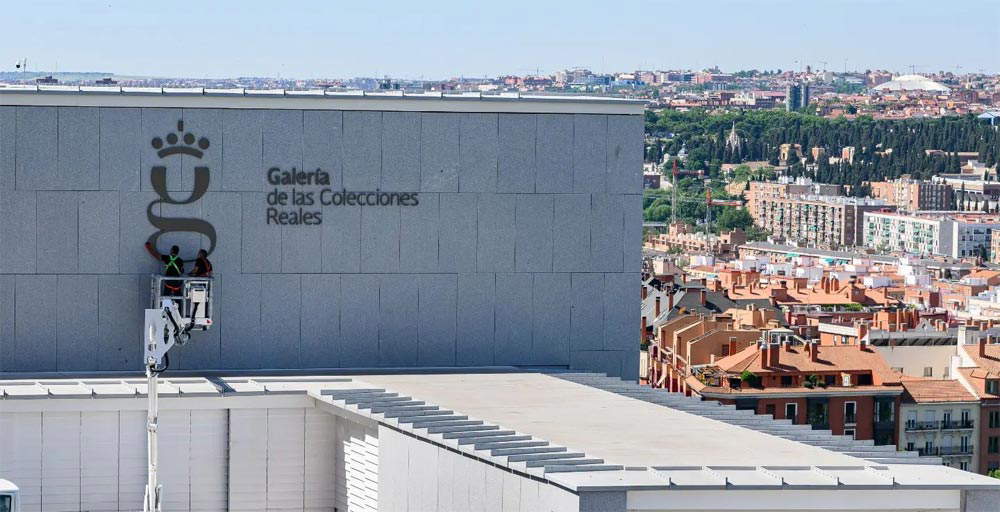 The installation of the logo on the
The installation of the logo on theThe Galería de las Colecciones Reales building was designed with two goals in mind: to be part of Madrid’s natural-artificial landscape and to preserve the public and open character of Plaza de la Almudena. Architects Luis M. Mansilla and Emilio Tuñón were charged with the architectural design of a building that remains invisible from the esplanade located between the cathedral and the Royal Palace itself. It develops vertically and builds a linear space towards the Campo del Moro: it follows the traces of the Royal Palace itself and integrates perfectly with its surroundings.
It is a fully contemporary work, sober and simple, but, at the same time, endowed with a strong character. Its facade is configured on the basis of reinforced concrete pillars covered on the outside with granite slabs. The interior is intended to surprise visitors with its spaciousness, natural light, and open views of the outdoor landscape. To date, it has already received ten major architectural awards, including the first prize from the Official College of Architects of Madrid (COAM 2016), the FAD for Architecture in 2017, and the American Architecture Prize (AAP 2017). Work, which began in December 2006, took place in four phases and was completed in December 2015. The building has an area of more than 40,000 square meters, 8,000 of which are for public use. There are three exhibition halls, but they are huge: large open-plan aisles 120 meters long by 16 meters wide, generated by a succession of concrete porticoes.
On the first basement floor is the archaeological section, where vestiges of the Arab walls of great historical importance have been musealized, because they include the gateway that gave access to Madrid. These are remains from the origin of the city that have been identified and dated and can be visited and understood thanks to an audiovisual that explains the historical evolution of the area and will show the public what walled Madrid looked like and how it developed over the centuries. These are the oldest ruins of Madrid’s Arab wall, found during excavations for construction work on the building: dating back to the 9th century, a three-meter wide portion remains, demonstrating the grandeur of Madrid’s Arab fortress. In addition to having all the spaces and services necessary for public attention and enjoyment, the building has adequate space for the management and conservation of cultural property that houses equipped storage facilities and a multipurpose room for preventive conservation.
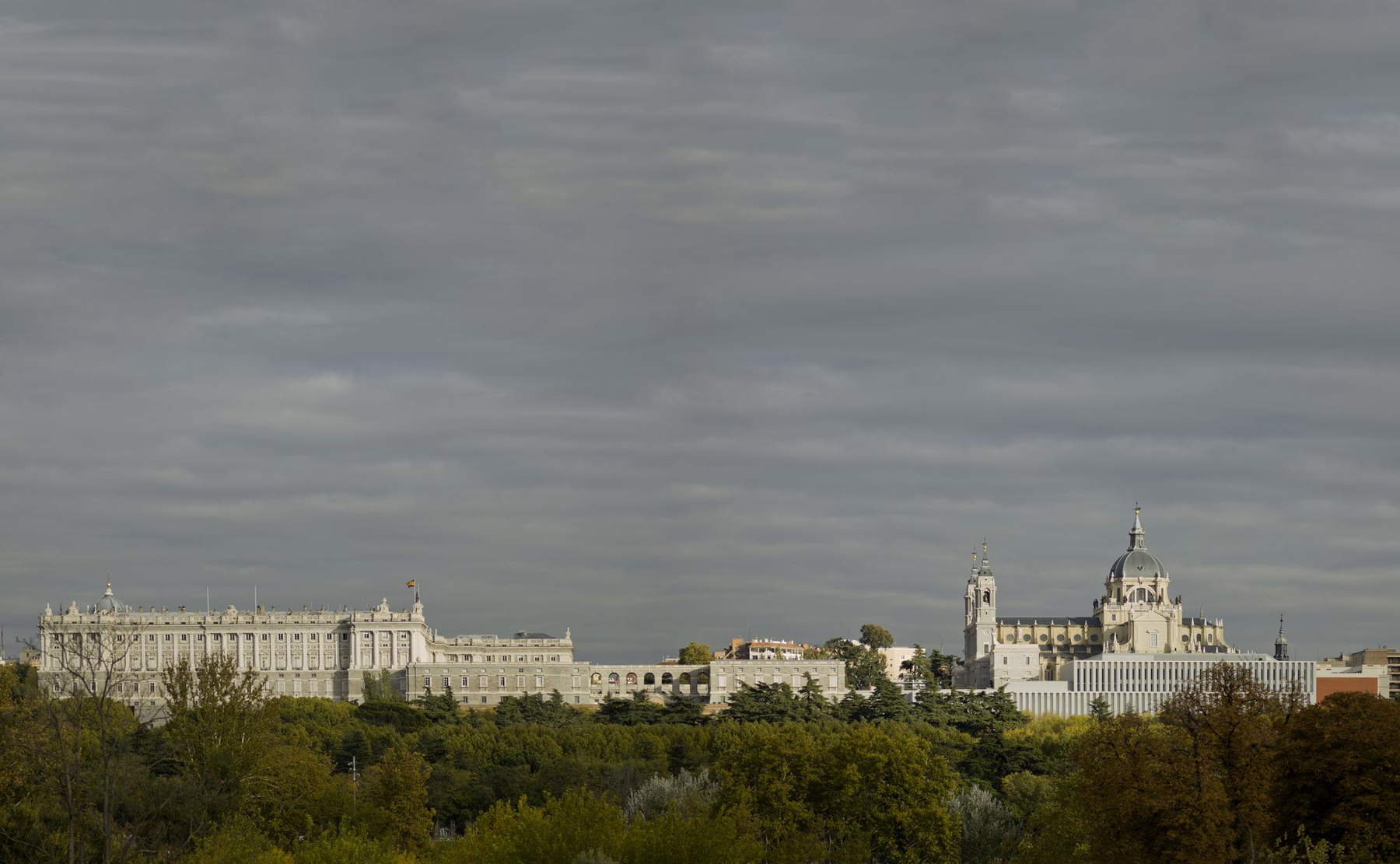
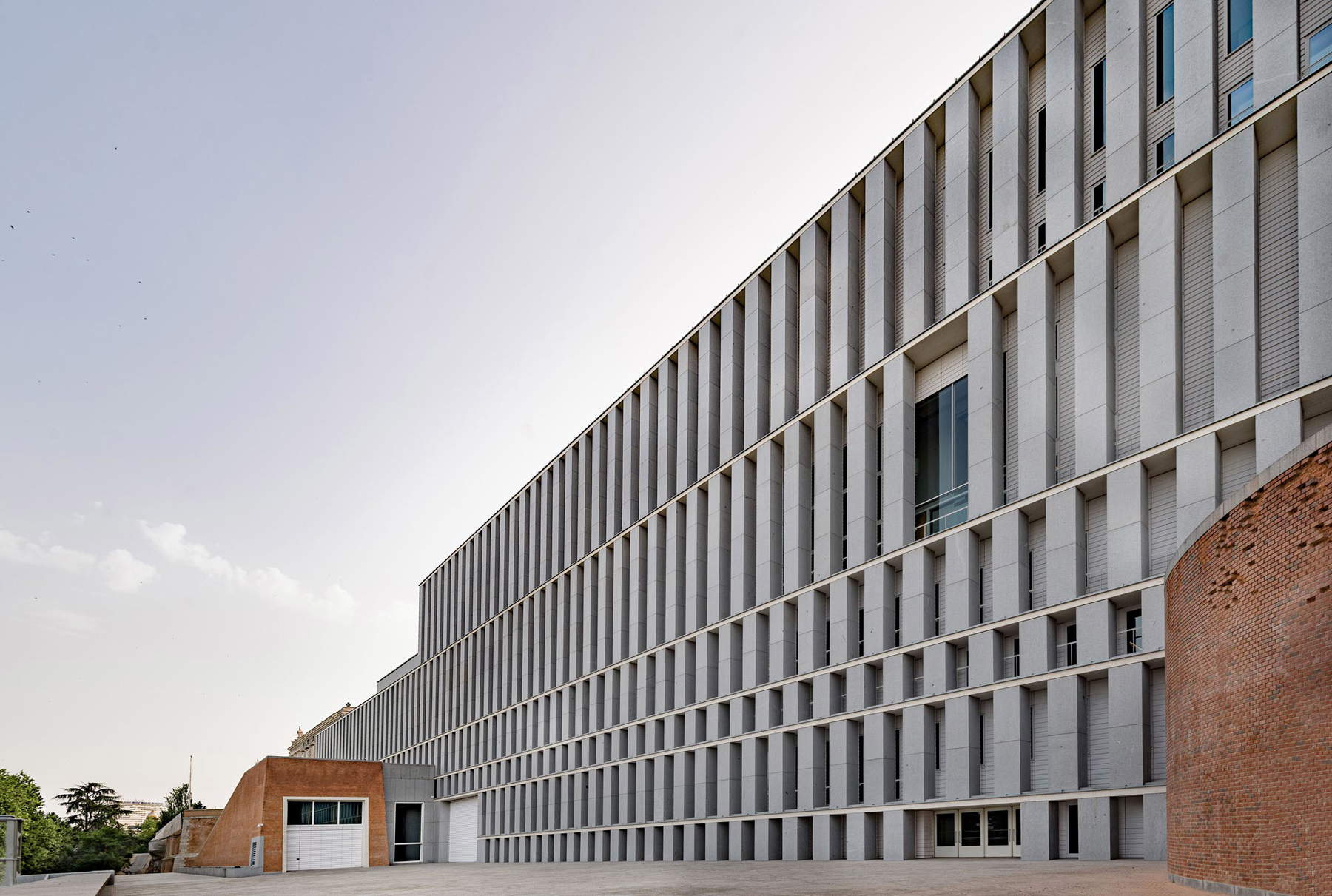
 The
The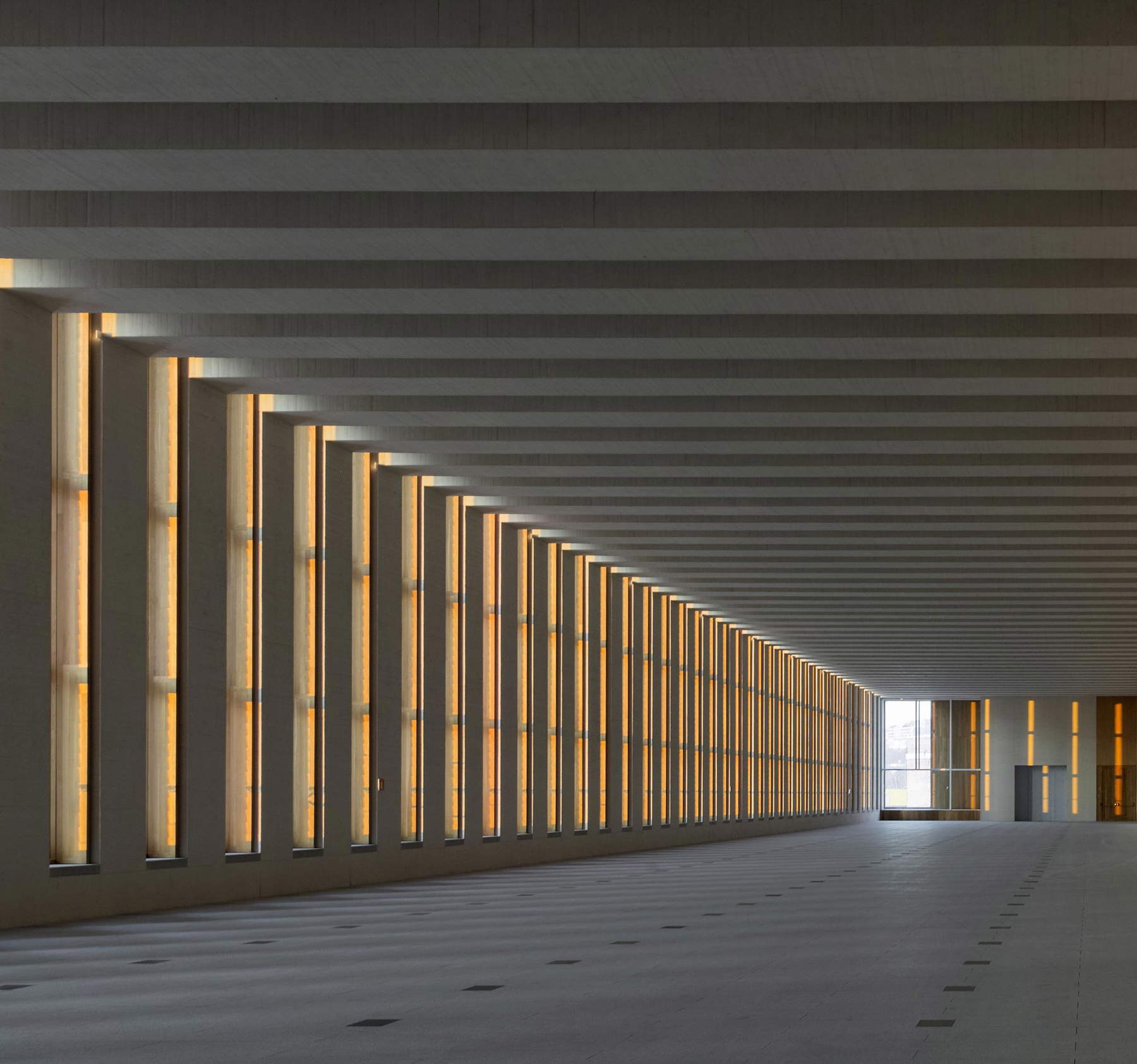
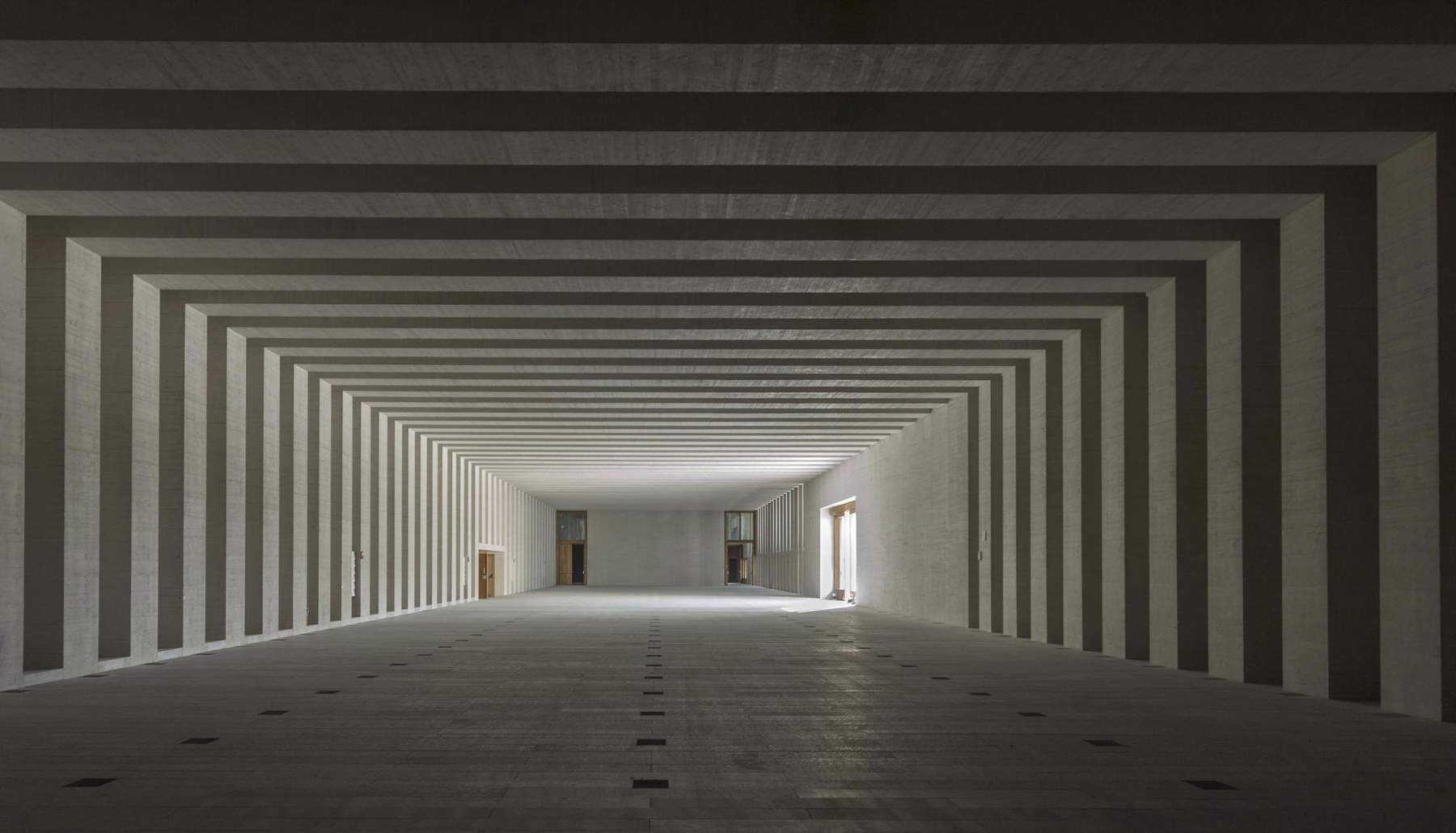
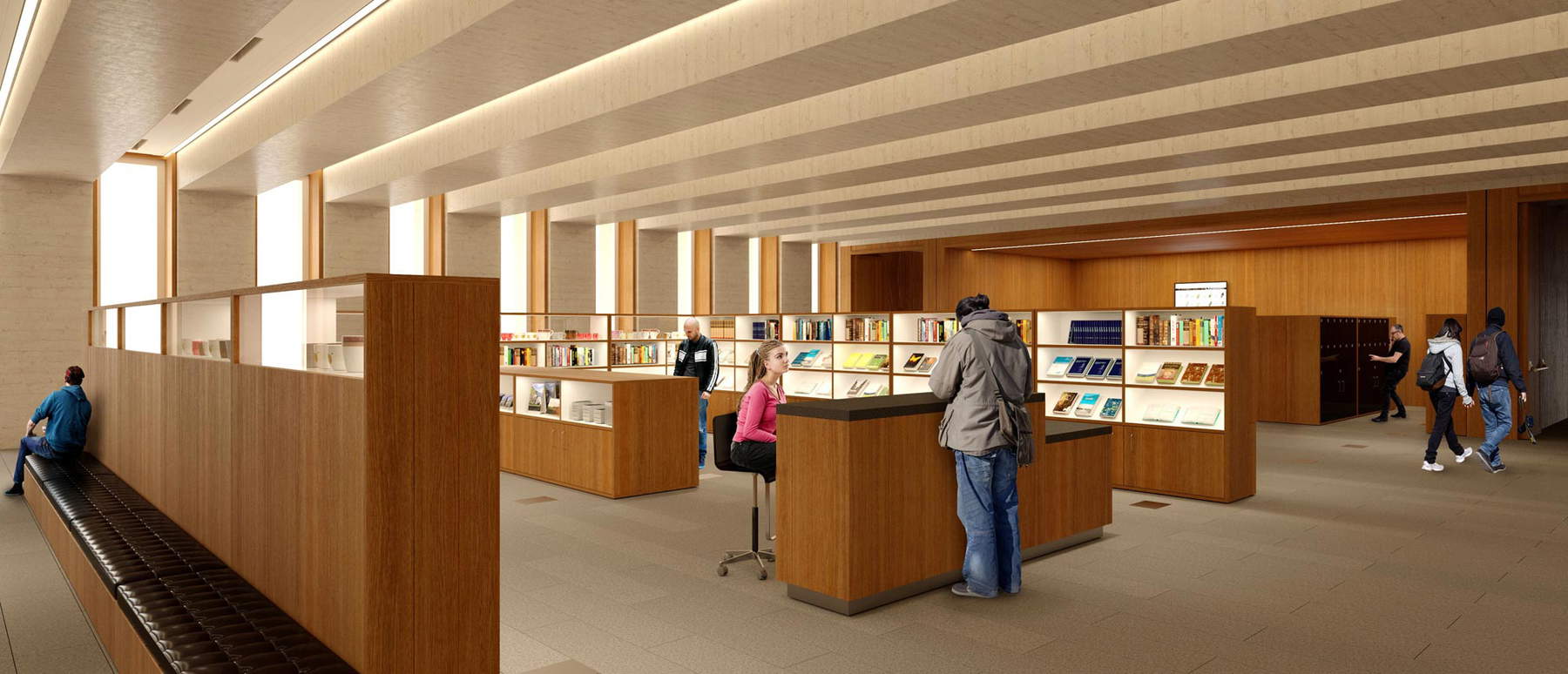
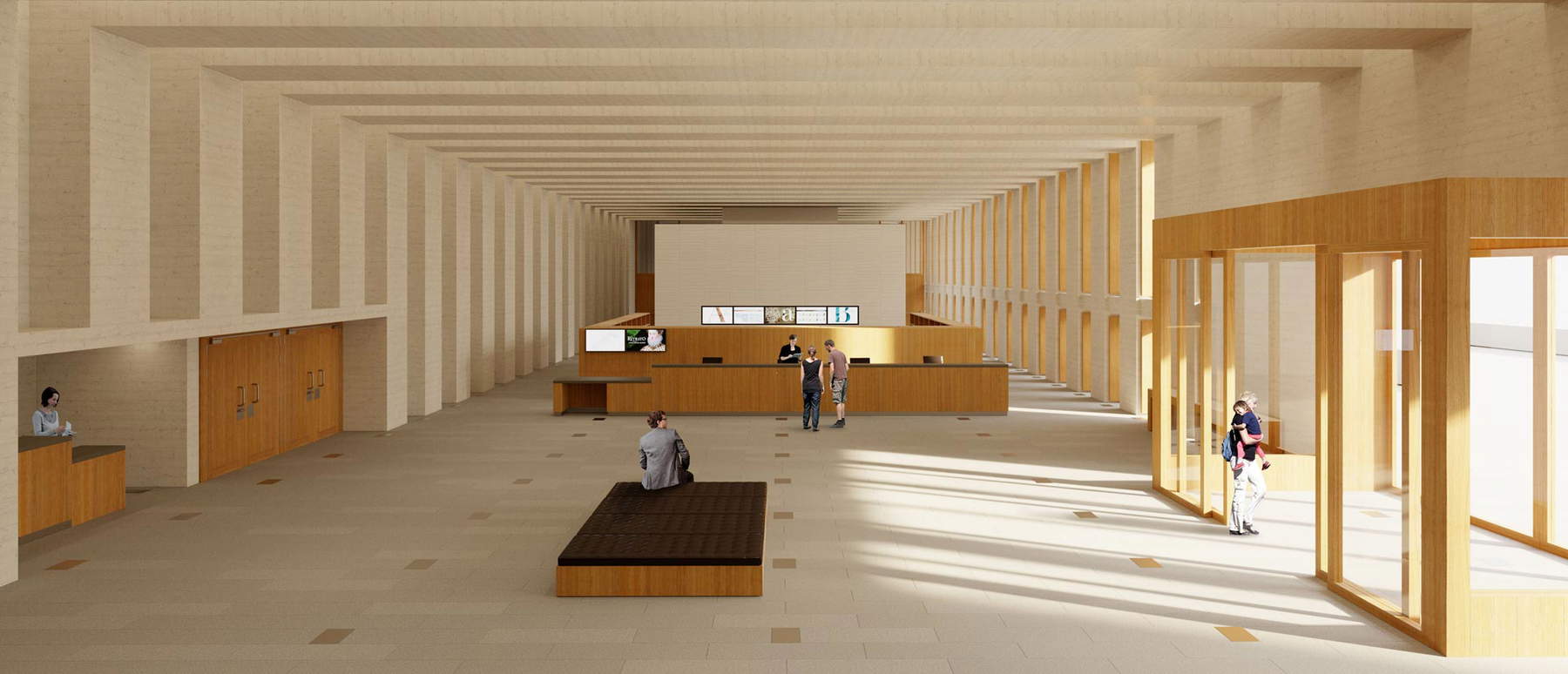 Rendering
RenderingDirecting the Gallery, appointed in November 2020, is art historian Leticia Ruiz Gómez (Santander, 1961), formerly head of the Prado Museum’s Department of Spanish Renaissance Painting. A Ph.D. in Art History, a degree in Restoration from the Official School of Conservation and Restoration and Conservation of Cultural Heritage in Madrid, a center where she was also a lecturer, and also a degree in History and Geography, she is a great expert on the royal collections and has already maintained previously close ties with Patrimonio Nacional, as she served on the institution’s safeguarding committee between 1990 and 1998, dealing with, among other things, the inventory and cataloguing of the Palace’s historical and artistic assets.
She also carried out and published studies on the royal collections, particularly the Monastero de las Descalzas Reales in Madrid and the institution’s ancient photographic collection. In addition, Ruiz was responsible for directing, between 1995 and 1998, the cataloguing of the Patrimonio Nacional’s collection of historical photographs, work that culminated in an exhibition held at the Royal Palace in Madrid. In 1999 she began working as curator at the Prado Museum, where she was in charge of the collection of works from the Renaissance and the first third of the 17th century.
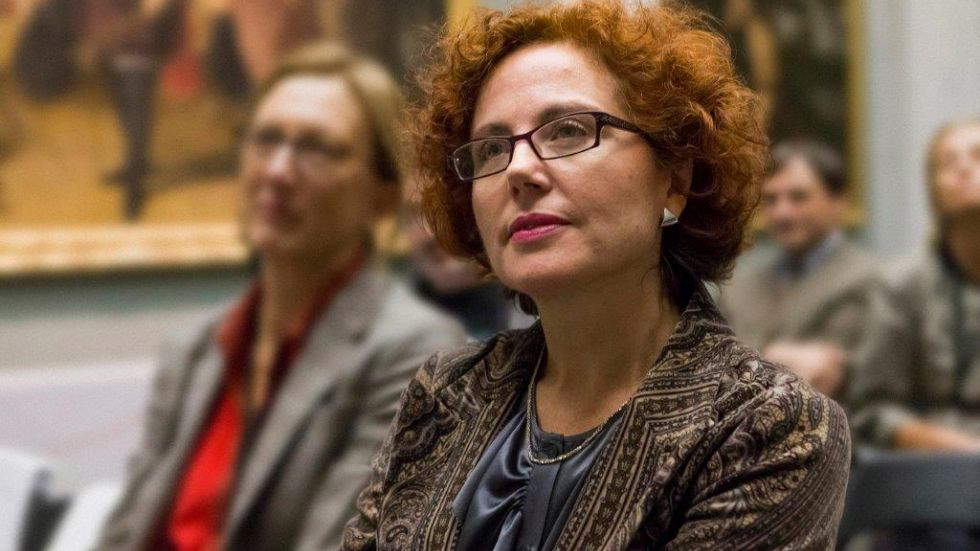
The main entrance to the Gallery, as mentioned, is located on the Cornisa of the Plaza de la Armería. From this entrance, the visitor will begin a descending path through three exhibition levels to learn about the role of collectors and patronage of the Spanish monarchy, as well as the work of the National Heritage in preserving, researching, and disseminating the rich cultural and natural heritage it manages. This descent takes place through wide ramps where various audiovisual resources will be shown that contextualize the collections that visitors are going to discover. In the first room, on the first basement floor (floor -1), dedicated to the Habsburgs, the Royal Armory’s collections of tapestries and weapons dialogue with works by Bosch, Titian, El Greco, José de Ribera, Diego Velázquez, and Caravaggio. Highlights include Juan de Flandes’ Jesus and the Canaanite Woman from the Polyptych of Isabella the Catholic, followed by Caravaggio’s 1607 masterpiece Salome with the Head of the Baptist and Velázquez’ celebrated White Horse .
Among the most significant pieces that the Gallery will exhibit to the public, theArchangel Saint Michael Defeating the Devil, a 1692 masterpiece by sculptor Luisa Roldán, better known as “La Roldana,” a key figure of the Iberian Baroque and the first woman sculptor in the Spanish court, is definitely worth mentioning. Director Ruiz described the Roldana as “a pioneering figure at a time when women were not recognized,” adding that “now thanks to the Gallery, we give her back the splendor she deserves.” Ruiz, at the presentation of the restoration ahead of its exhibition, carried out by restorer Ana Loureiro, also highlighted the artist’s technical virtuosity and expressiveness through her faces and hands, not forgetting the polychromy and contrasting colors as “a foretaste of the later style, Rococo.” The work, which is 2.64 meters high and weighs 157.5 kilograms, required a team of 20 people, a protective cage and a telescopic crane to lower the piece from the workshops to the fourth floor of the Palace after restoration alone. “It was one of the most exciting transfers, seeing the archangel make its final flight to go to the Gallery,” Ruiz said again. In this lengthy restoration work, Loureiro patched up cracks and removed localized repainting, especially on the face and hands, “to give the work back its expressiveness, one of La Roldana’s hallmarks.”
Continuing, as part of the narrative along the rooms, the construction of the Monastery of San Lorenzo del Escorial occupies a prominent place, as does the founding of the Royal Monasteries, female spaces par excellence and symbols of power and patronage. This floor has a privileged window on the origin of Madrid: as mentioned, it is here that it will be possible to see the 9th-century walls and gateway to the city discovered during the building’s construction. The archaeological room explains the history of that early Madrid and the evolution of the city to the present day with a video and various educational resources.
The tour of floor -2, dedicated to the Bourbons, begins with floor plans of the new Royal Palace, built by order of Philip V after the burning of the Alcázar, and concludes with a model of the Gallery of the Royal Collections, as an epilogue to the story of the vicissitudes of the great monumental and museum complex of the Royal Palace of Madrid. Themes such as music, royal factories and manufactures, or the construction of the Royal Palace of La Granja, represented through decorative arts, tapestries, musical instruments, and furniture, will coexist with works by Anton Mengs, Francisco Goya, Giambattista Tiepolo, and great artists of the Spanish 18th century such as Luis Paret and Mariano Maella. The end of the tour explains to the visitor the function and role of Patrimonio Nacional, the entity in charge of, among other functions, the preservation and dissemination of the Royal Sites and Royal Collections.
Floor -3, accessible from Campo del Moro, is designed as a more dynamic exhibition space. In addition to the exhibition hall dedicated to temporary exhibitions, it houses a large immersive cube that will serve as a 360-degree projection site for the architectural and natural spaces of the Royal Sites.
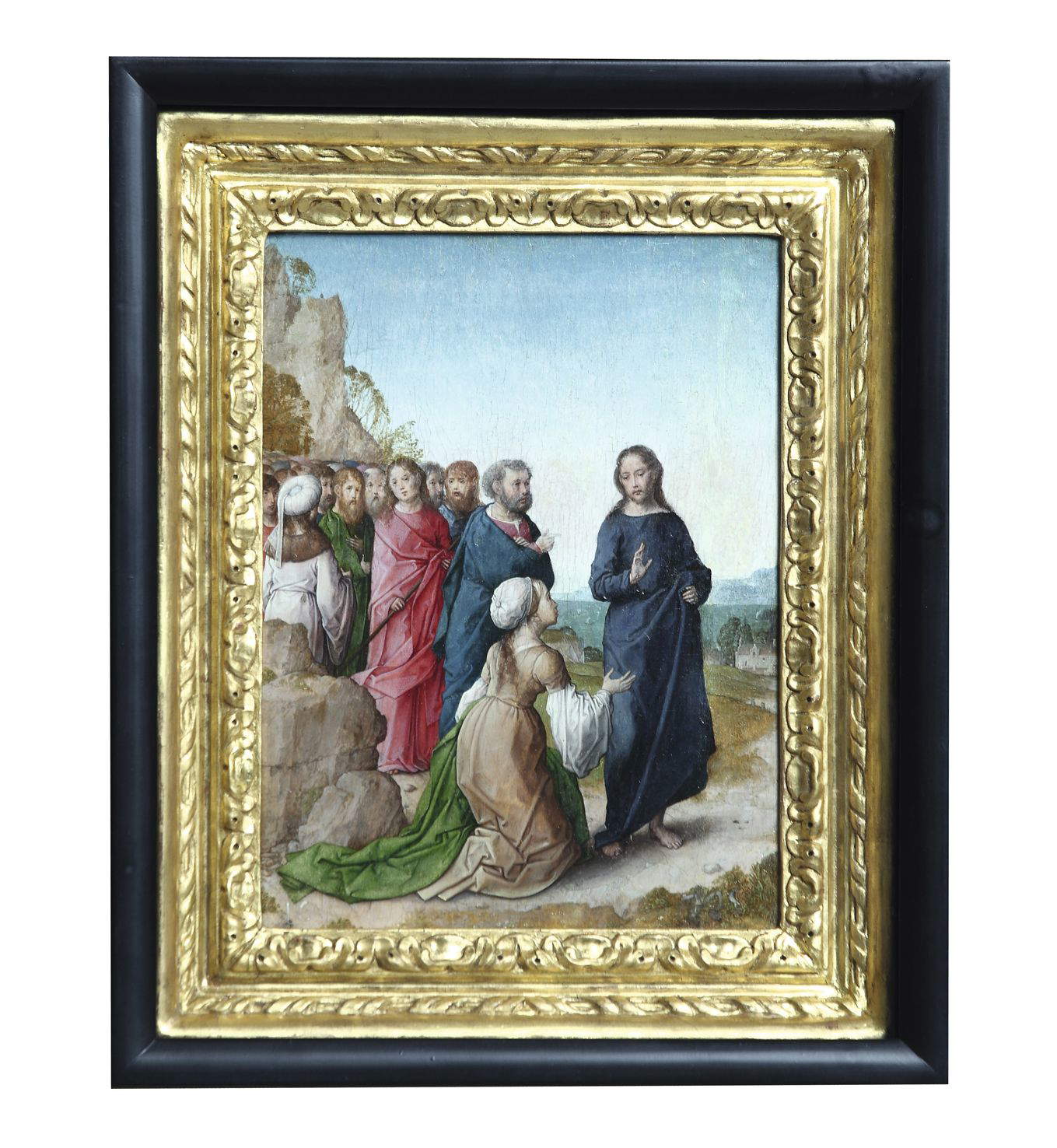
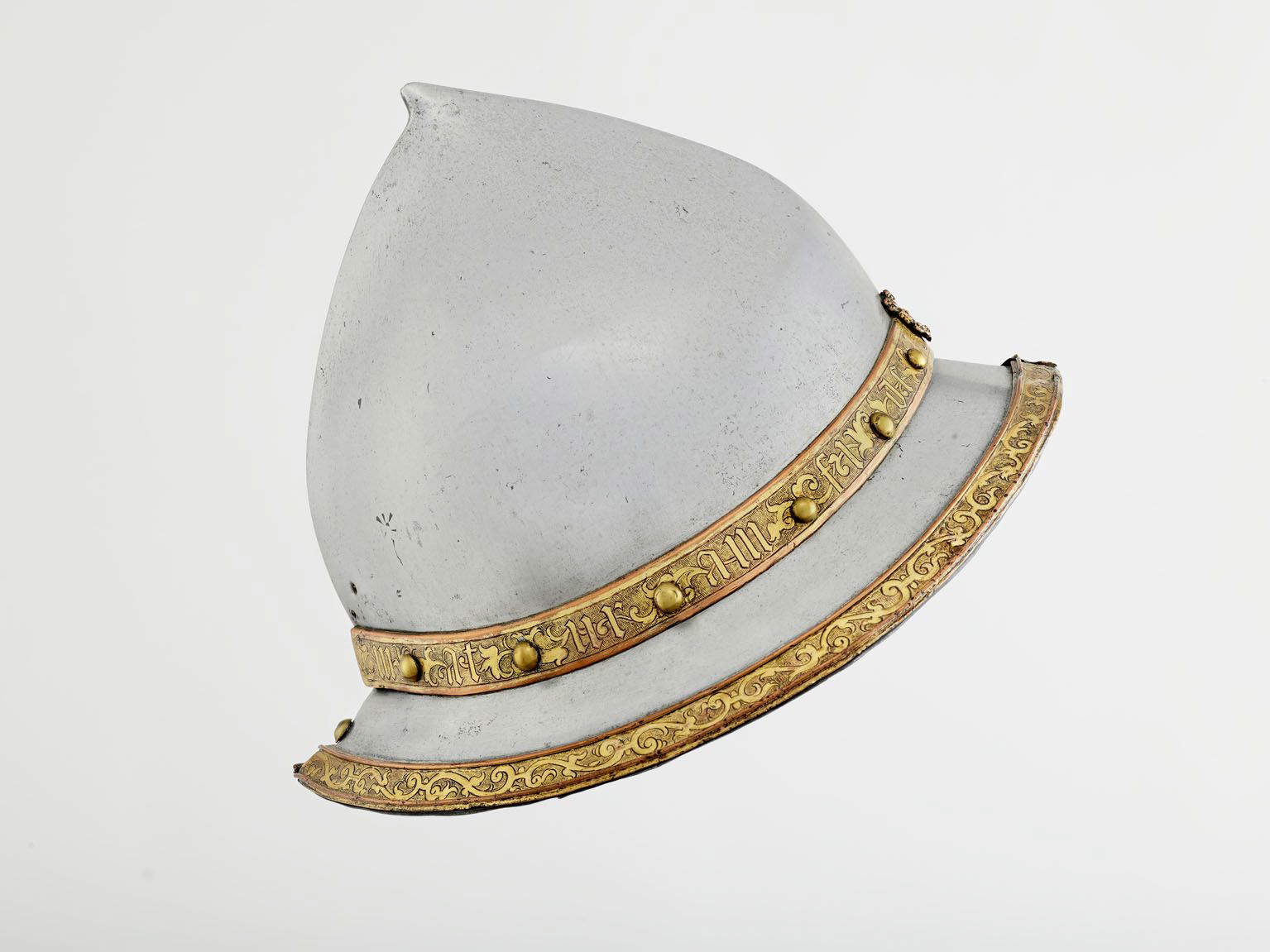
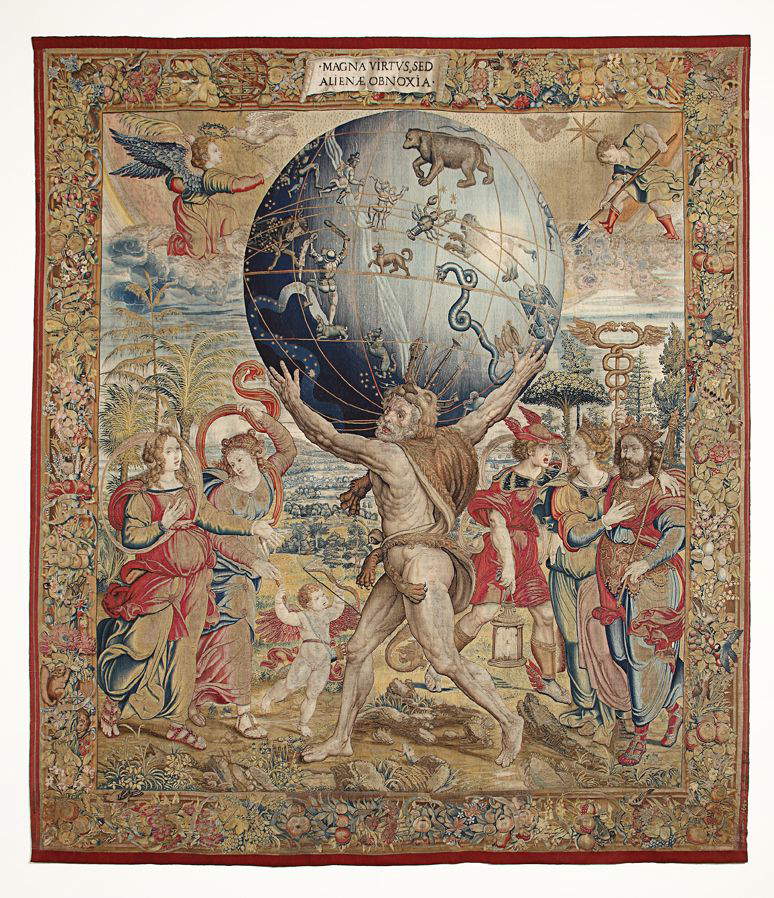
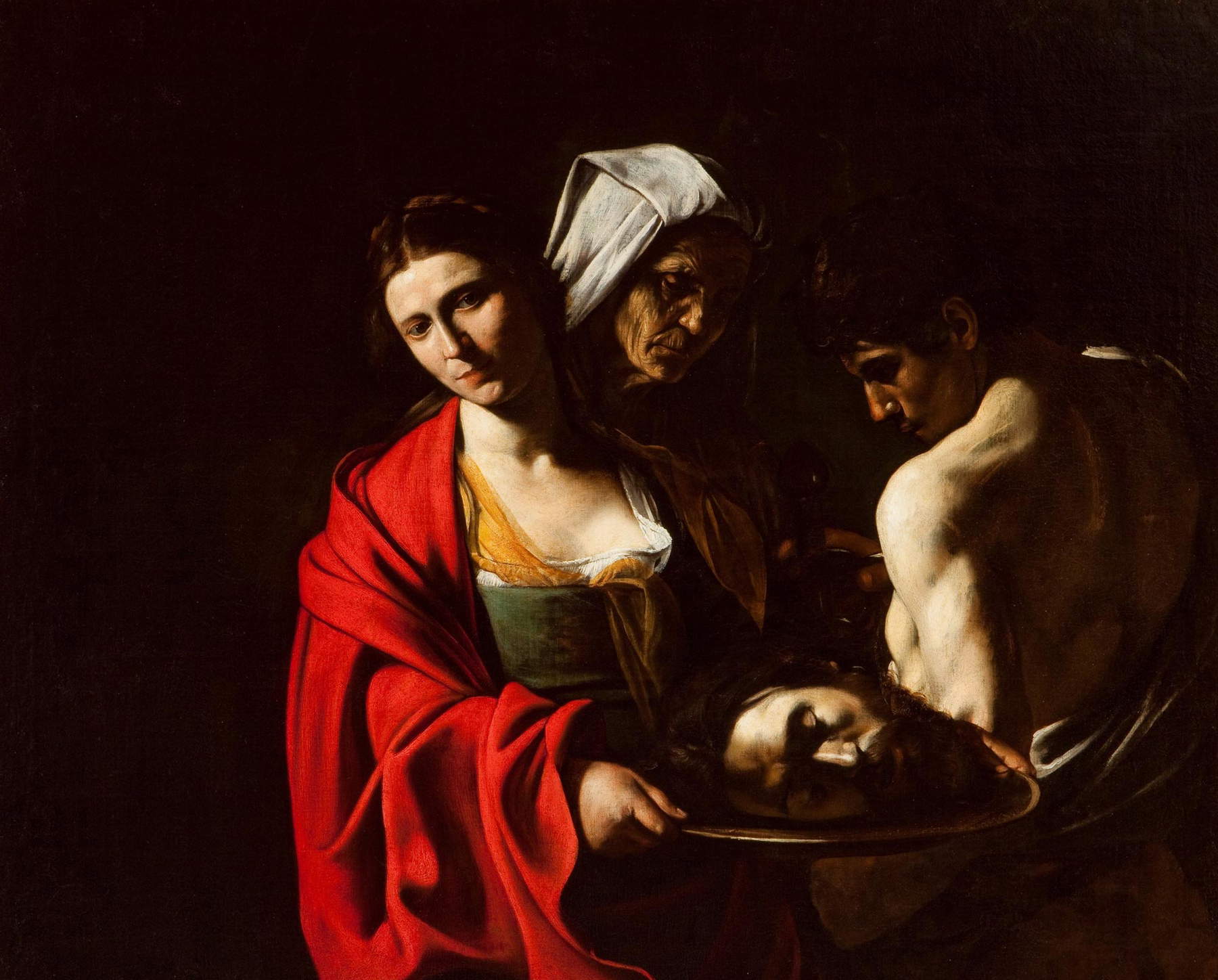
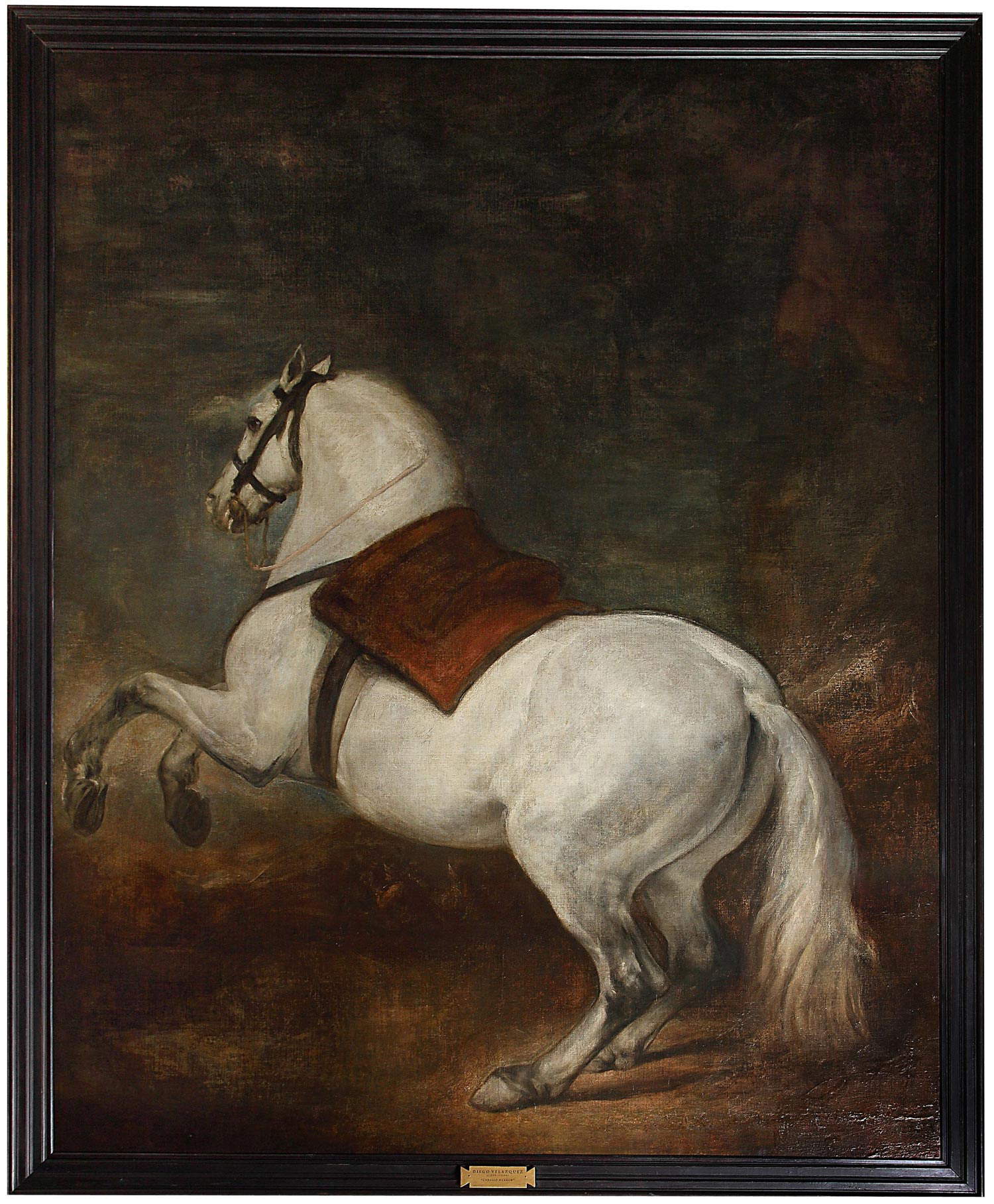
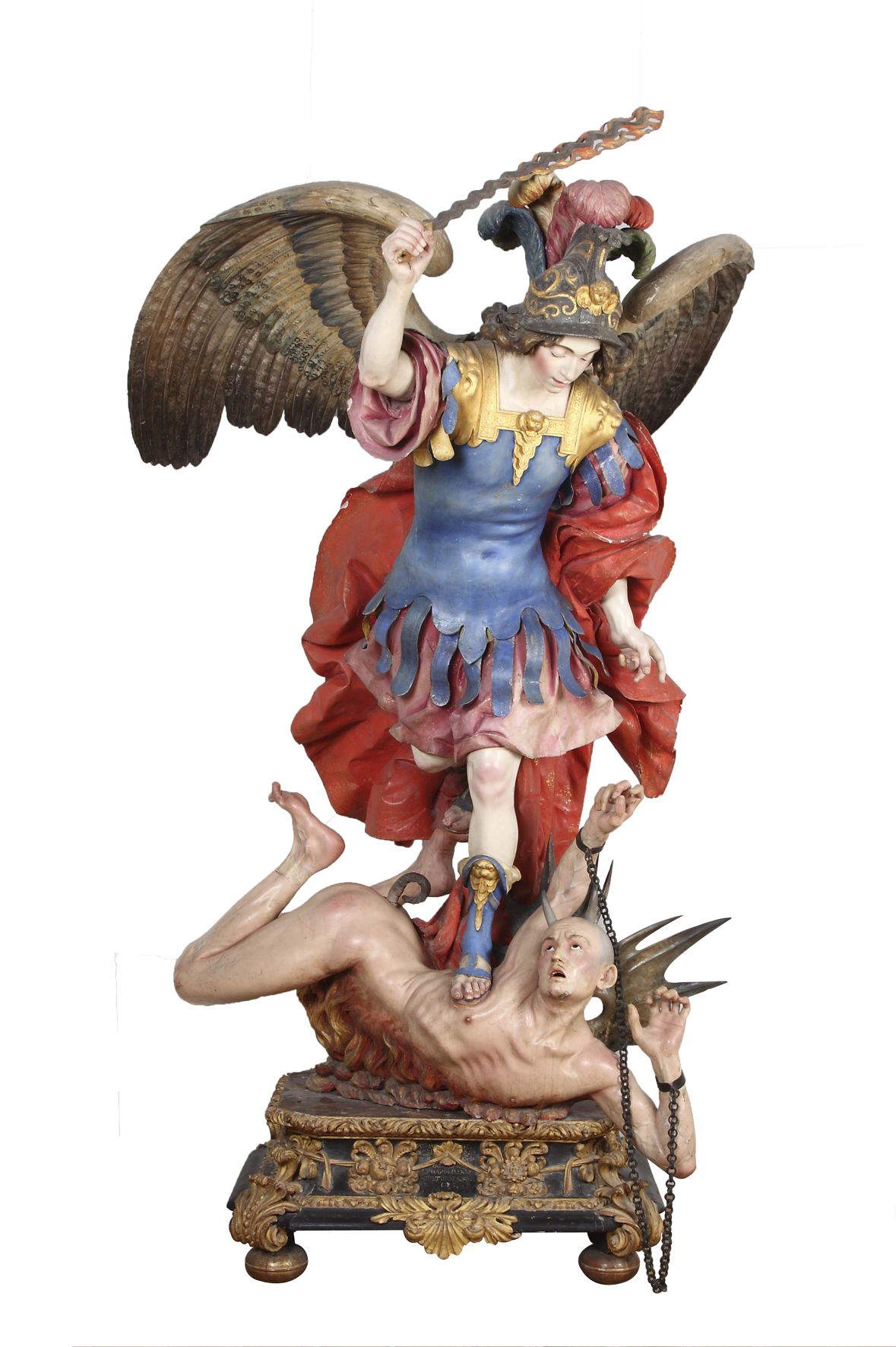
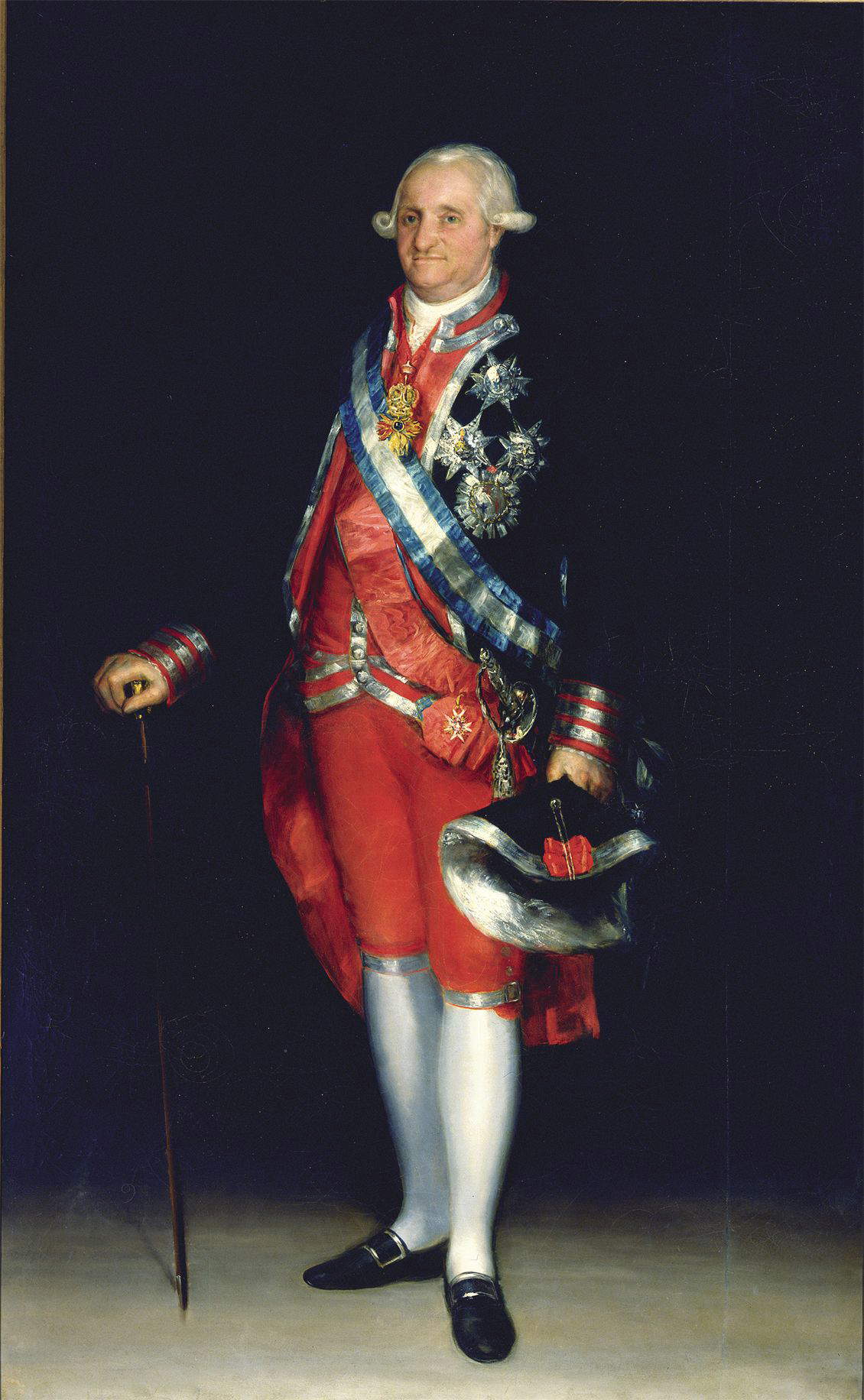
To bring the museum closer to the public, Patrimonio Nacional has already launched in late April social media profiles of the Royal Collections Gallery, which is already present on Instagram and TikTok (@galeriacoleccionesreales). The goal is to make the museum’s efforts known to a new audience in an accessible way. In launching the new profiles, Patrimonio Nacional enjoyed the support of youtuber Ter, a cultural popularizer with more than 4 million followers.
And to celebrate the social opening, the museum raffled off preview tours of the Gallery for an exclusive, closed-door walk through the Tuñón and Mansilla-designed building.
However, Patrimonio Nacional already has a presence on Instagram, Twitter, LinkedIn, YouTube and Facebook, where it has more than 180,000 followers in all. In the last year it has experienced significant growth on all channels, especially on Instagram. Here the number of followers has increased by 250 percent and its publications have reached 2.5 million users.
With the opening of these two new accounts, the Gallery is following the path of other major museums with the goal of reaching a new, younger audience and introducing the collections in a different, educational and fun way. The live museum event, however, will be starting June 28. Those who want to keep up to date can visit the Patrimonio Nacional website.
Warning: the translation into English of the original Italian article was created using automatic tools. We undertake to review all articles, but we do not guarantee the total absence of inaccuracies in the translation due to the program. You can find the original by clicking on the ITA button. If you find any mistake,please contact us.